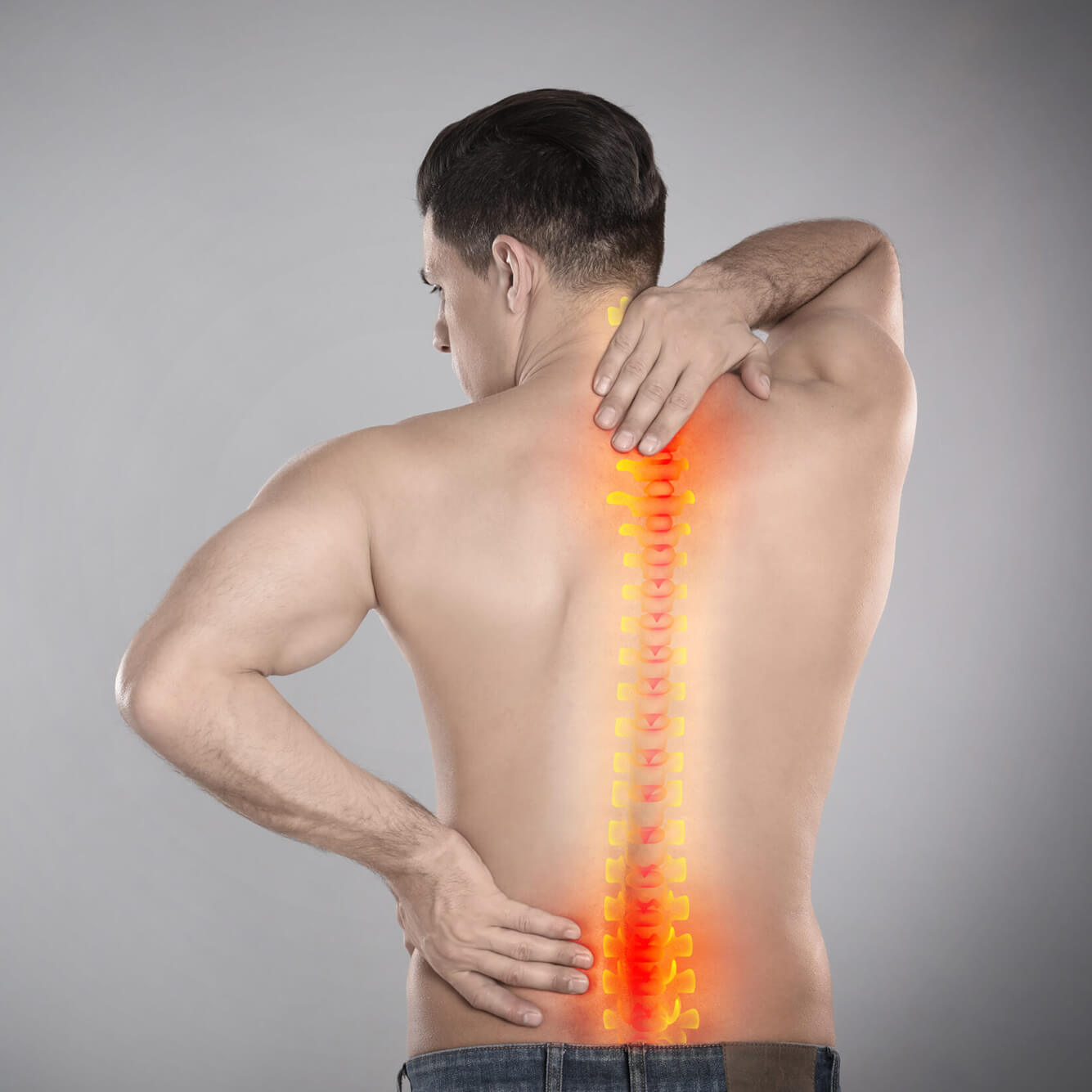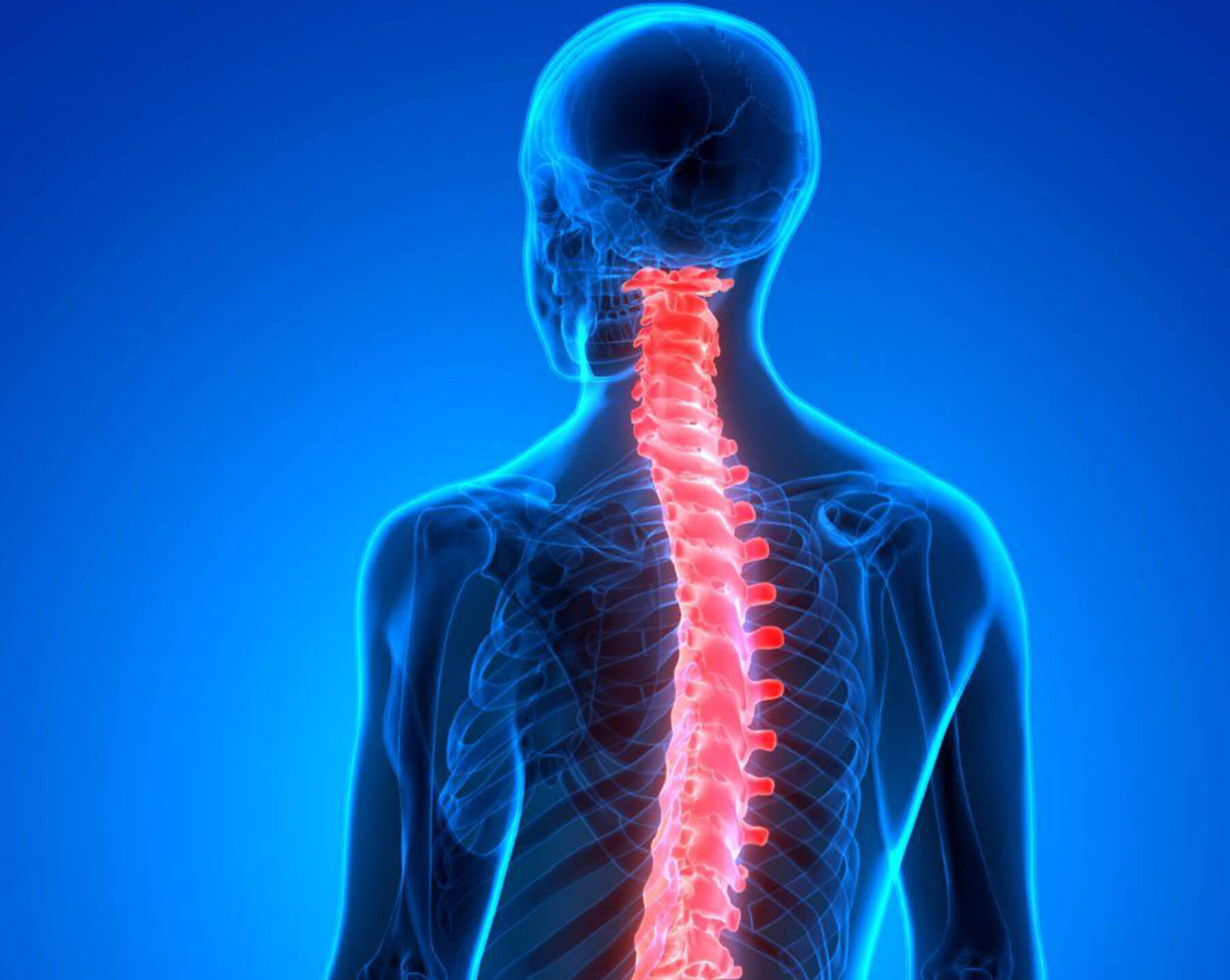

Our ServicesThoracic Myelopathy
Thoracic myelopathy is a condition that results from the compression or damage of the spinal cord in the thoracic (mid-back) region of the spine. Though less common than cervical or lumbar myelopathy, it can have serious implications if not diagnosed and treated promptly.

What Is Thoracic Myelopathy?

The thoracic spine consists of 12 vertebrae (T1–T12) located between the cervical (neck) and lumbar (lower back) regions. Myelopathy refers to dysfunction of the spinal cord. When this occurs in the thoracic region, it’s known as thoracic myelopathy.
Unlike the more flexible cervical or lumbar spine, the thoracic spine is relatively rigid due to the rib cage. This rigidity makes thoracic myelopathy less frequent, but when it does occur, the spinal cord compression can lead to significant neurological deficits.
When conservative  care needs
care needs
a specialist’s touch.
touch.
Causes of Thoracic MyelopathySome of the most common causes include:
Degenerative disc disease: Age-related wear and tear can lead to disc herniation or bone spur formation that compresses the spinal cord.
Ossification of the ligamentum flavum (OLF): A condition where a spinal ligament hardens and thickens, leading to cord compression.
Tumors: Both benign and malignant spinal tumors can impinge on the thoracic spinal cord.
Trauma: Fractures or dislocations due to accidents can damage the thoracic cord.
Infections: Conditions like spinal tuberculosis (Pott’s disease) or epidural abscesses.
Congenital abnormalities: Rare structural anomalies that can cause narrowing of the spinal canal.
Symptoms to Watch ForSymptoms of thoracic myelopathy can develop gradually or suddenly, depending on the underlying cause. Common signs include:
Mid-back pain
Weakness or numbness in the legs
Difficulty walking or a spastic gait
Loss of coordination or balance
Bladder or bowel dysfunction
Increased reflexes or muscle stiffness in the lower limbs
Diagnosing Thoracic MyelopathyIf thoracic myelopathy is suspected, your doctor may order:
MRI (Magnetic Resonance Imaging): The most sensitive test for visualizing spinal cord compression.
CT scan: Especially helpful in identifying bone abnormalities.
X-rays: To assess spinal alignment or degenerative changes.
Neurological examination: To evaluate sensory and motor function, reflexes, and coordination.
Treatment Options
Treatment depends on the cause and severity of the condition:01.
Non-Surgical Management
- Physical therapy: To maintain mobility and manage symptoms.
- Medications: Pain relievers, muscle relaxants, or anti-inflammatory drugs.
- Bracing: In certain cases, spinal braces can provide support.
Surgical Management
Surgery may be necessary to relieve spinal cord compression and prevent further damage. Common procedures include:
- Decompression surgery (laminectomy or laminoplasty)
- Discectomy
- Spinal fusion
Early surgical intervention often leads to better outcomes, especially when neurological deficits are present.
Prognosis
The outlook varies depending on the cause and timing of treatment. Early diagnosis and intervention typically offer the best chances for neurological recovery. Chronic or untreated compression can lead to permanent spinal cord damage and disability.
Final Thoughts
Thoracic myelopathy, though less common than other forms of spinal cord compression, is a serious condition that demands timely medical attention. If you're experiencing unexplained mid-back pain, leg weakness, or changes in coordination, consult a neurologist or spine specialist. Early evaluation and treatment can prevent complications and improve quality of life.

